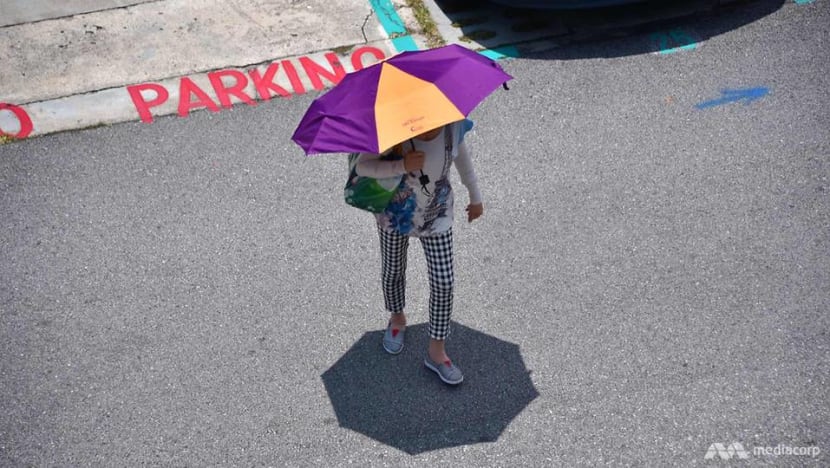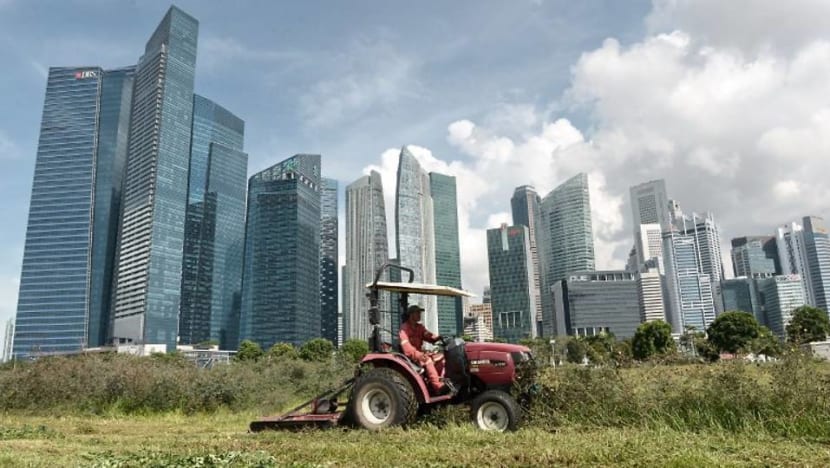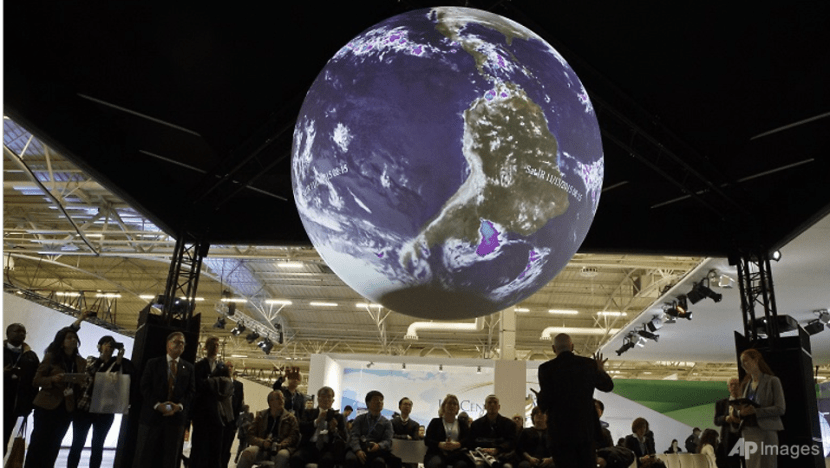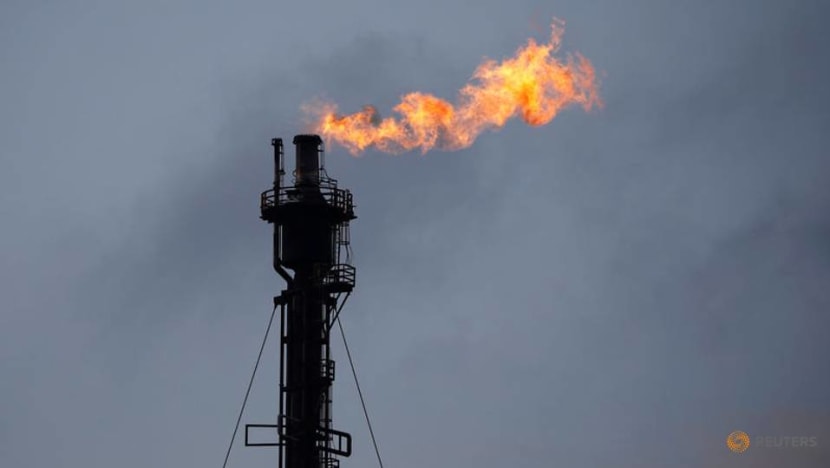commentary Commentary
Commentary: Singapore’s climate change fight must be clear about these facts
More needs to be done to reduce carbon emissions to net-zero by 2050 for effective adaptation, say Bertrand Seah, Tim Min Jie, Sarah Ichioka and Wong Pei Chi.

Person with an umbrella during a spell of hot weather in Singapore. (File photo: CNA/Gaya Chandramohan)
SINGAPORE: The commentary “As time runs out on the climate crisis, Singapore prepares to address the cost of adapting” adopts the kind of urgent language appropriate to the climate crisis we are facing now.
It emphasises the importance of adaptation measures, which lower the risks posed by the consequences of climatic changes. One such example is recent measure to build Changi Airport Terminal 5 5.5 metres above mean sea level to deal with rising sea levels.
It is highly disappointing, however, that it downplays the pressing need to adopt more substantial mitigating measures that address root causes, by reducing greenhouse gas emissions.

The commentary notes that the question of mitigation in Singapore has been far simpler and less politically fraught than in other countries, and that Singaporeans have already worked towards more climate-friendly consumption patterns.
This obscures a few important facts about mitigation, unlike what the commentary posits, as the cost of climate change mitigation is very much “inextricably linked to political to political questions of cost, economic restructuring, decline and job losses”.
LOOK AT INDUSTRY’S ENERGY CONSUMPTION
Firstly, the source of much of Singapore’s emissions is not consumers, but industry.
As Singapore’s Energy Statistics indicate, of 2016’s total final energy consumption of 14,714.6 kilotonne of oil equivalent (ktoe), over 65 per cent (9,670.3 ktoe) was consumed by industry, far dwarfing the 5 per cent (739.2 ktoe) from household consumption and less than 18 per cent (2,587.1 ktoe) from transport.
Furthermore, Singapore’s Intended Nationally Determined Contribution states that a reduction of 36 per cent in Emissions Intensity (EI) from 2005 levels is intended by 2030.
As EI is measured by greenhouse gas emissions per dollar of GDP, this means that Singapore’s emissions could continue to rise during this period, as long as our GDP continues to grow.
This contradicts the recommendations of the United Nations Intergovernmental Panel on Climate Change special report on 1.5 degrees Celsius of warming, a consensus of the best available scientific evidence, which makes it crystal clear that mitigation is necessary.

According to the report, global emissions need to be cut in half by 2030 and reach net-zero in 2050 in order to stay below 1.5 degrees of warming and avoid the worst consequences of global warming to human life.
READ: The ocean is changing – it’s getting more acidic, a commentary
Singapore, on the other hand, rather than mitigating total absolute emissions, is actively growing them.
For a commentary that calls for us to be clear-eyed in our assessment, it is a shame that its argument is ultimately detached from these realities.
TAKE A HARDER LOOK AT DIRTY INDUSTRIES
Secondly, if we are to be serious about the climate crisis, we should not overlook the need to engage in much more substantial mitigation measures that address the root causes of carbon emissions.
This includes focusing on the emissions of the dirtier industries, such as the oil and gas industry where Singapore plays host to one of the world’s largest petrochemical complexes that also contributes to the majority of emissions from industry as at 2014, according to the Government's most recent published statistics in the Biennial Update Report to the UN Framework on Climate Change Convention.
This is not to say that adaptation, which is the focus of the Government’s existing efforts, is not important.
In fact, mitigation and adaptation need to come hand-in-hand.
As philosopher Dale Jamieson has pointed out, adaptation without mitigation is futile. This is because the less mitigation is done, the worse warming will be, and the more adaptation will be required.

Reducing emissions to remain within 1.5 degrees Celsius of warming gives adaptation measures higher chances of success. Indeed, failure to mitigate might bring climate beyond tipping points, from which it might not even be possible for us to adapt.
SINGAPORE IS PART OF THE PROBLEM
Thirdly, while it is true that Singapore only represents a small proportion of global emissions, we should not pretend that we are not part of the problem.
A study by the Carnegie Institution for Science’s Steven Davis and Ken Caldeira published in 2010 showed that Singapore ranked in the top three countries for net imported emissions per capita and consumption emissions per capita.
In addition, being a small nation has not kept Singapore from tackling ambitious challenges such as social housing and smart city planning, with our successful outcomes modelled as positive policy examples by the global community.
READ: Climate change needs better storytelling to address severe threats, a commentary
Reducing emissions at the scale and speed required could also bolster our expertise offering to other developing cities in the region and be a new opportunity to demonstrate to the world a Singaporean model of true sustainability.
In order to bring about the collective understanding and meaningful action the commentary calls for, these are the facts we must first be clear-eyed about.
The authors are volunteers with 350 Singapore, a grassroots group that aims to inspire the public, policymakers, and industry to get Singapore on track to a world within 1.5 degrees Celsius of warming, through a just transition to a net-zero carbon future by 2050.















